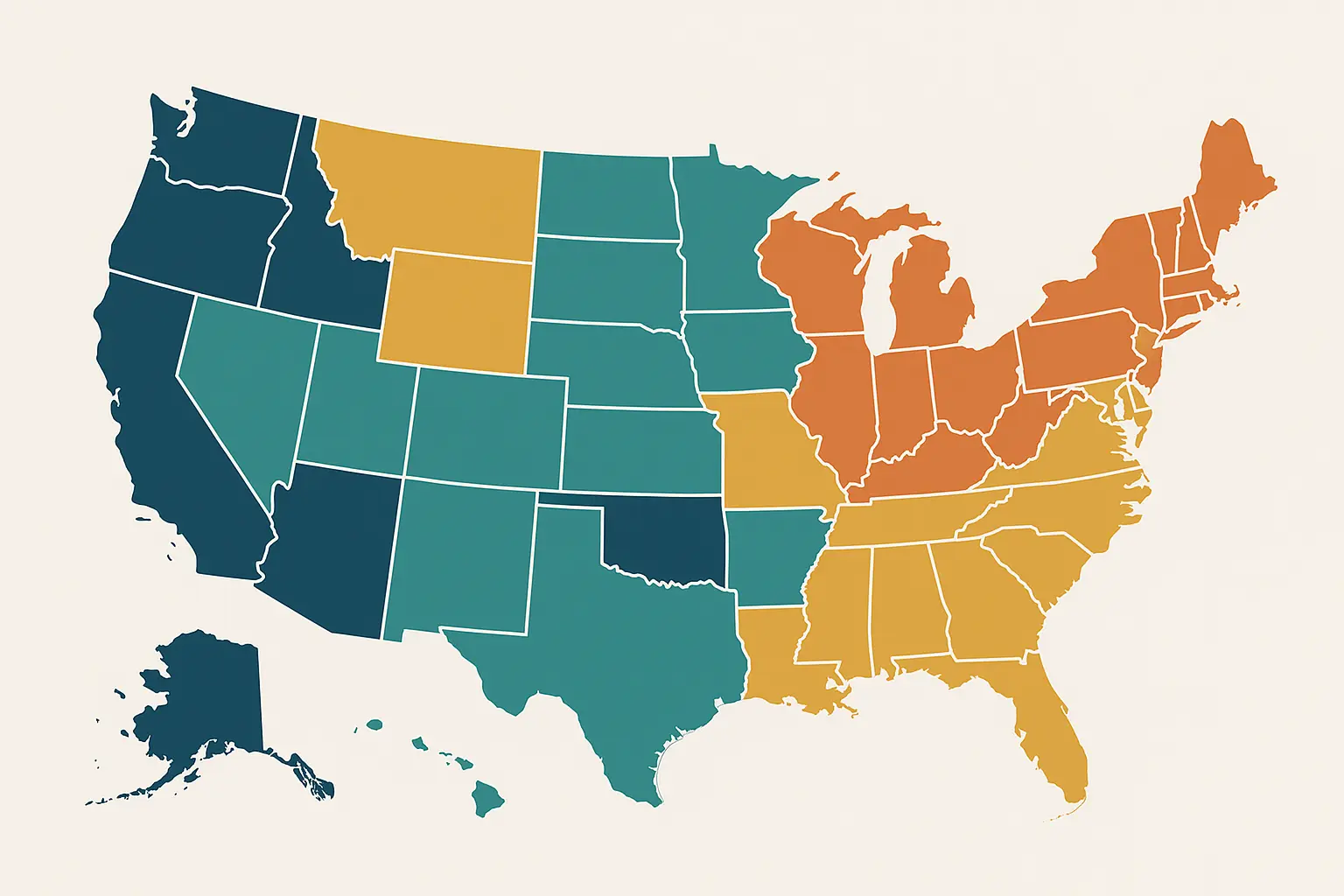CRNA Salary Breakdown: What You’ll Actually Make in This High-Paying Healthcare Career

Look, when people ask what CRNAs actually make, they want the real deal – not just some government statistic. According to the Bureau of Labor Statistics, the average CRNA salary is $212,650, making CRNAs the highest-paid nursing specialty and reflecting the high level of judgment, skill, experience, and knowledge required for managing patients’ anesthesia needs.
But here’s what matters: your total package usually adds another $20,000-$50,000 on top of base salary through call pay, bonuses, and benefits.
Table of Contents
- The Real Numbers Behind CRNA Compensation
- Where You Practice Makes All the Difference
- Your Experience Level Determines Your Paycheck
- Different Work Settings, Different Pay Scales
- How to Actually Negotiate What You’re Worth
- CRNA Salaries vs. Other Healthcare Jobs
- What’s Coming Next for CRNA Pay
- Final Thoughts
TL;DR
- CRNAs earn between $180,000-$300,000 annually, with most making around $200,000 as a starting point
- Location dramatically impacts your salary – rural areas often pay more than cities when you factor in cost of living
- Your first year you’ll likely make $170,000-$190,000, but experienced CRNAs can push $250,000+ easily
- Independent contractor work pays 20-30% more per hour, but you’ll handle your own benefits and taxes
- CRNAs consistently out-earn most other advanced practice nurses by 40-60%
- The field is growing 38% through 2031, which means continued salary growth and job security
The Real Numbers Behind CRNA Compensation
Here’s the thing about CRNA pay that nobody talks about upfront: that $212,650 average you see everywhere? It’s just the beginning. Your actual take-home depends on so many factors that two CRNAs working in the same city can have $50,000+ differences in their paychecks.
Most CRNAs pull in between $180,000-$300,000 a year, making the typical CRNA salary one of the highest in advanced practice nursing, but your total compensation package includes performance bonuses, call pay, and benefits that can add another $20,000-$50,000 to your annual earnings.
Think about it this way – you’re literally keeping people alive while they’re unconscious during surgery. That level of responsibility doesn’t come cheap, and hospitals know it.
Your Base Salary Reality Check
Your foundation starts around $185,000-$200,000 as a new grad — a starting CRNA salary range that reflects both expertise and responsibility that comes with managing patient anesthesia care.
Consider Sarah, a new graduate CRNA in Denver who received three job offers: a hospital position at $185,000 base salary, an ambulatory surgery center at $195,000, and a rural hospital 90 minutes away offering $210,000. While the rural position offered the highest base salary, she chose the ASC position after factoring in commute costs, work-life balance, and the $15,000 signing bonus that brought her total first-year compensation to $210,000.
The rural hospital paid more because they’re desperate for CRNAs. That’s the market working in your favor.
The Extra Cash You’ll Actually See
Beyond base pay, most places throw in productivity bonuses, call differentials, and performance incentives. This isn’t play money – we’re talking $20,000-$50,000 extra annually if you’re strategic about it.
Understanding these bonus structures becomes crucial when you’re evaluating job offers and planning your financial future. Too many people focus only on base salary and miss these opportunities. Don’t be that person.
What Your Benefits Package is Actually Worth
Your benefits are worth $15,000-$25,000 yearly – health insurance, retirement matching, malpractice coverage, and education money. When comparing offers, add this to your base salary for the real picture.
When you’re evaluating job offers, factoring in these benefits gives you a more accurate picture of your true compensation value. Calculate the total package, not just the salary number.
| Benefit Component | Typical Value | Annual Worth |
|---|---|---|
| Health Insurance | Employer pays 80-90% | $8,000-$12,000 |
| Retirement Match | 3-6% of salary | $6,000-$12,000 |
| Malpractice Insurance | Full coverage | $3,000-$5,000 |
| Continuing Education | $2,000-$4,000 allowance | $2,000-$4,000 |
| Total Benefits Value | $19,000-$33,000 |
Where You Practice Makes All the Difference
Here’s where it gets interesting – geography can mean a $50,000+ difference in your paycheck. While certain states consistently offer higher salaries, the relationship between location and actual purchasing power is more complex than simple salary comparisons suggest.
California and New York pay more, but your money doesn’t go as far. Meanwhile, rural areas often pay surprisingly well when you factor in cost of living.
The States That Actually Pay Best
California, New York, and Texas lead the pack, offering salaries 15-25% above national averages. But don’t chase the highest number without doing the math. These premium salaries often reflect higher costs of living and increased demand for anesthesia services.
However, high-paying states don’t always translate to better financial outcomes when you factor in housing costs, taxes, and overall living expenses. According to salary data by industry, outpatient care centers offer the highest CRNA salaries at $263,960 annually, followed by general medical and surgical hospitals at $230,150, while offices of physicians typically pay $207,630. Source: Nurse.org
Rural vs City: The Surprising Winner
Rural positions often pay $210,000-$280,000, meaning the CRNA salary can be significantly higher outside of big cities because facilities compete hard for talent, while urban positions may provide lower base pay but better benefits and career advancement opportunities.
This rural premium exists because healthcare facilities in smaller communities often struggle to recruit specialized providers and must offer competitive compensation packages to fill critical positions. I know several CRNAs who moved to smaller towns and ended up with significantly more disposable income despite lower gross salaries.
What Your Money Actually Buys You
A $190,000 salary in a low-cost area might leave you with more spending money than $250,000 in San Francisco. Smart CRNAs evaluate opportunities based on net financial benefit rather than gross salary figures alone.
Have you considered how much house you can actually afford in different markets? The difference might surprise you.
Why Some Places Pay More
It’s simple supply and demand. Areas with physician shortages, aging populations, or just not enough CRNAs have to pay up. They’ll throw in signing bonuses, moving expenses, and premium salaries to get you there.
Regional demand factors drive salary variations across different geographic areas, with these shortages often creating premium salary opportunities and above-average compensation packages to attract and retain talent.
Your Experience Level Determines Your Paycheck
Your earning trajectory is pretty predictable and honestly, pretty great. CRNA compensation follows a clear path based on experience, with significant earning potential growth throughout your career.
Understanding this progression helps you plan career moves and salary negotiations strategically. The growth potential is honestly one of the most attractive aspects of this career path.
What New Grad CRNAs Actually Make
New graduate CRNAs typically start at $170,000-$190,000, with many employers offering sign-on bonuses of $10,000-$25,000 to attract fresh talent in competitive markets. These starting salaries reflect the immediate value new CRNAs bring to healthcare facilities, even without extensive experience.
According to Salaryexpert.com, an entry-level nurse anesthetist will command an annual salary of $135,080, while a senior CRNA will earn $247,078, demonstrating significant earning growth potential throughout a CRNA’s career. Source: Nurse.org
The educational requirements are changing significantly too. Starting in 2025, a doctorate will be required for all new CRNAs, as a master’s degree will no longer suffice according to National University. This shift to doctoral-level preparation should push starting salaries even higher for new graduates.
Mid-Career Money Reality
Experienced CRNAs with 5-10 years in practice often earn $200,000-$250,000, with opportunities for leadership roles and specialized practice areas driving higher compensation. This mid-career phase represents the sweet spot where experience meets opportunity, allowing CRNAs to leverage their expertise for better positions and higher pay.
Many CRNAs find this period offers the best balance of compensation and career satisfaction. You’ve got the experience to handle complex cases confidently, but you’re not yet dealing with all the administrative headaches that come with senior leadership roles.
Senior-Level and Leadership Money
Chief CRNAs and department directors can earn $250,000-$350,000+, combining clinical practice with administrative responsibilities and team leadership. These senior positions require extensive experience and leadership skills but offer the highest compensation potential in the field.
Mike started as a staff CRNA in Texas at $195,000 five years ago. Now he’s Chief CRNA making $285,000 while still doing clinical work three days a week, managing 12 CRNAs while maintaining his clinical duties. That’s the kind of growth you can expect if you play your cards right.
Different Work Settings, Different Pay Scales
The type of healthcare facility and employment model you choose significantly impacts your compensation structure and overall earning potential. When people ask how much a CRNA makes, the answer really depends on where and how you work.
Each setting offers distinct trade-offs between immediate compensation, job security, and long-term career opportunities.
Hospital vs Surgery Center Showdown
Hospital-employed CRNAs often receive comprehensive benefits but may earn 10-15% less than ambulatory surgery center positions, which typically offer higher hourly rates but fewer benefits. This trade-off requires careful consideration of your priorities.
It’s the classic choice: steady and safe versus higher immediate pay. Hospitals provide stability and extensive benefits, while ASCs offer higher immediate compensation but potentially less job security and fewer advancement opportunities.
Academic Positions: Lower Pay, Better Life?
Academic CRNAs may accept 15-20% lower salaries in exchange for job security, research opportunities, and comprehensive university benefits packages. These positions appeal to CRNAs interested in education, research, and professional development beyond clinical practice.
While the immediate financial compensation may be lower, academic positions often provide long-term career satisfaction and stability. The shift to doctoral education is creating new opportunities in academia, as the entry into practice degree has shifted to the clinical practice doctorate according to National University, potentially increasing demand for doctorally-prepared CRNAs in educational settings.
How to Actually Negotiate What You’re Worth
Understanding different employment models and developing strong negotiation skills are essential for maximizing your earning potential. Whether you choose traditional employment, independent contractor work, or partnership opportunities, each model offers distinct advantages and challenges.
Before entering salary negotiations, it’s crucial to understand how to ask for a raise strategically to maximize your chances of securing the compensation you deserve.
Employee vs Contractor Math
Independent contractors earn 20-30% more per hour but handle their own benefits, taxes, and business headaches. W-2 employees get steady benefits and less hassle but potentially lower total compensation.
The contractor route appeals to CRNAs who want higher immediate income and are comfortable managing business aspects, while employment offers predictability and comprehensive benefits. Which sounds better to you – higher pay with more responsibility, or steady benefits with less stress?
Locum Work: Maximum Money, Maximum Flexibility
Locum CRNAs can pull $150-$200+ per hour plus travel and housing allowances, making this an attractive option for maximizing short-term income. This work style suits CRNAs who enjoy variety, travel, and premium compensation for temporary assignments.
However, locum work requires flexibility and comfort with changing work environments and temporary living situations. It’s great money if you like variety and don’t mind living out of a suitcase.
Partnership and Ownership Opportunities
CRNAs who become partners in anesthesia groups or own ambulatory surgery centers can significantly increase their earning potential through profit-sharing and equity appreciation. These opportunities represent the highest earning potential in the field but require business acumen, significant investment, and willingness to take on additional responsibilities beyond clinical practice.
Negotiation That Actually Works
Research local CRNA salary market rates, document your unique qualifications, and negotiate beyond base pay, productivity bonuses, and professional development funds. Focus on your value proposition and be prepared to discuss specific contributions you’ll make to the organization.
Successful negotiation requires preparation, confidence, and understanding that employers expect some negotiation.
CRNA Salary Negotiation Checklist:
- Research local market rates for your experience level
- Document specialized certifications and training
- Calculate total compensation including benefits
- Prepare specific examples of your clinical outcomes
- Practice negotiation conversations beforehand
- Consider non-salary benefits (PTO, CME funds, flexible scheduling)
- Get final offers in writing before accepting
Contract Terms That Actually Matter
Key negotiation points include restrictive covenants, malpractice tail coverage, call requirements, and termination clauses that can significantly affect career mobility and earnings. Understanding these contract elements protects your long-term interests and ensures you’re not agreeing to terms that could limit future opportunities.
Building Your Professional Value
Develop specialized skills, pursue advanced certifications, and build a track record of quality outcomes to justify higher compensation demands. Your value proposition should clearly articulate what makes you worth premium compensation.
Continuously investing in your professional development creates leverage in salary negotiations. When applying for higher-paying positions, having a professionally formatted resume is essential, and understanding professional resume format standards can help you stand out in competitive healthcare markets.
| Employment Model | Hourly Rate Range | Annual Potential | Benefits | Best For |
|---|---|---|---|---|
| Hospital Employee | $85-$120/hour | $180,000-$250,000 | Full package | Stability seekers |
| ASC Employee | $95-$130/hour | $200,000-$270,000 | Limited | Higher base pay |
| Independent Contractor | $120-$180/hour | $250,000-$375,000 | Self-funded | Business-minded |
| Locum/Travel | $150-$200/hour | $300,000+ (if full-time) | Minimal | Flexibility lovers |
CRNA Salaries vs. Other Healthcare Jobs
CRNAs earn 40-60% more than most nurse practitioners, who typically make $110,000-$140,000. The compensation difference reflects the specialized nature and critical importance of anesthesia care compared to other advanced practice nursing roles.
When you look at CRNA salaries against other nursing roles, the difference is pretty dramatic. This premium exists for good reason – we’re talking about professionals who manage life-critical situations every single day.
How CRNAs Stack Up Against Other Nurse Practitioners
CRNAs consistently earn 40-60% more than most nurse practitioners, with average NP salaries ranging from $110,000-$140,000 compared to CRNA averages of $200,000+. This significant difference reflects the specialized nature and liability of anesthesia practice.
The compensation gap justifies the
CRNA Pay vs Clinical Nurse Specialists
While Clinical Nurse Specialist positions typically cap around $90,000-$120,000, CRNAs command significantly higher salaries due to direct patient care responsibilities and the critical nature of anesthesia services.
This comparison highlights how direct patient care roles, especially those involving life-critical interventions, command premium compensation in healthcare. The responsibility level just isn’t comparable between these roles.
CRNAs vs Anesthesiologists: The Doctor Difference
Anesthesiologists still out-earn CRNAs at $350,000-$450,000, approximately 75-100% more than CRNAs, though CRNAs often have better work-life balance and fewer administrative burdens. While the salary gap is significant, many CRNAs find their compensation-to-lifestyle ratio quite favorable compared to physician colleagues.
The educational investment difference is substantial too – anesthesiologists complete medical school plus residency, while CRNAs complete specialized graduate programs. Both paths lead to excellent compensation, but the time investment varies considerably.
CRNA vs Anesthesia Assistant Salaries
Anesthesia Assistants earn similar salaries to CRNAs ($180,000-$220,000) but have more limited practice scope and geographic opportunities due to varying state regulations. This comparison shows how regulatory environment and practice scope directly impact earning potential and career flexibility.
Jennifer, a CRNA in Florida, can practice independently and earn $215,000 annually, while her colleague who trained as an Anesthesia Assistant in the same city earns $195,000 but must work under direct physician supervision and cannot practice in many rural areas where independent CRNA practice is essential.
What’s Coming Next for CRNA Pay
The future looks incredibly bright. The Bureau of Labor Statistics projects 38% job growth through 2031 – way above average. More demand means continued salary growth and job security.
The outlook for compensation appears extremely positive, with strong job growth projections and evolving healthcare technology creating new opportunities for specialized, higher-paying positions.
Job Growth and What It Means for Your Salary
The Bureau of Labor Statistics projects 38% growth in CRNA employment through 2031, significantly above average, which should continue to support strong salary growth and job security. This exceptional growth rate reflects increasing demand for anesthesia services driven by an aging population and expanding surgical procedures.
Strong job growth typically translates to continued upward pressure on salaries. When demand outpaces supply, compensation naturally increases to attract qualified professionals.
How Technology Changes CRNA Work and Pay
Technology isn’t replacing CRNAs; it’s making them more valuable. Integration of AI monitoring systems and robotic surgery is expanding CRNA responsibilities and creating opportunities for specialized, higher-paying positions. Rather than replacing CRNAs, technology is enhancing their capabilities and creating new subspecialty areas that command premium compensation.
Staying current with technological advances becomes crucial for maximizing future earning potential. The CRNAs who embrace new technology and develop expertise in emerging areas will likely see the biggest salary increases.
Planning Your CRNA Career for Maximum Earnings
Pursuing DNP degrees, specialty certifications, or advanced practice credentials can increase earning potential by 10-20% while opening doors to leadership and academic opportunities. Strategic career planning involves continuously investing in education and skills that differentiate you in the marketplace.
CRNA Career Advancement Roadmap:
- Complete doctoral degree requirements by 2025
- Pursue specialty certifications (pediatric, cardiac, trauma)
- Develop leadership and management skills
- Consider teaching or precepting opportunities
- Build professional network through AANA membership
- Explore business ownership or partnership options
- Stay current with emerging technologies and techniques
Building Professional Networks That Pay Off
Active participation in professional organizations, mentorship programs, and industry conferences creates access to high-paying positions and insider knowledge about market opportunities. Professional networking isn’t just about meeting people – it’s about building relationships that provide career intelligence and access to opportunities that aren’t publicly advertised.
The best positions often come through professional connections. As you advance in your career and pursue leadership roles, having an optimized resume becomes crucial for standing out, which is why understanding ATS-friendly resume formats can help ensure your application reaches hiring managers in competitive healthcare markets.
As you navigate the competitive CRNA job market and pursue higher compensation opportunities, having a professionally crafted resume becomes crucial for standing out among qualified candidates. Resume Builder IQ’s AI-powered platform specifically addresses the unique challenges healthcare professionals face when applying for specialized positions.
Since CRNAs often apply to multiple practice settings—from hospitals to ASCs to locum positions—Resume Builder IQ’s ability to create multiple targeted versions efficiently can significantly improve your application success rate. The platform’s ATS optimization ensures your resume reaches hiring managers, while the professional formatting helps you command the premium salaries this specialized field offers.
Final Thoughts
The CRNA salary is among the best in healthcare, starting around $170,000-$190,000 and climbing to $250,000+ with experience, it’s a solid financial investment. The financial investment in CRNA education pays substantial dividends throughout your career.
Your success comes down to smart choices about location, employment type, and continuous professional development. Whether you want stability or maximum earning potential, there’s a path that works. Rural areas often offer surprising financial advantages when you factor in cost of living, while urban areas provide more career advancement opportunities.
Looking ahead, the 38% projected job growth through 2031 means continued strong demand and rising pay. Technology integration and an aging population are creating new opportunities for specialized practice areas that command premium compensation. Your success in this field will depend on strategic career planning, continuous professional development, and effective negotiation skills.
The key? Understand your options, negotiate effectively, and never stop investing in your skills. The money is there – you just need to position yourself to get it.









